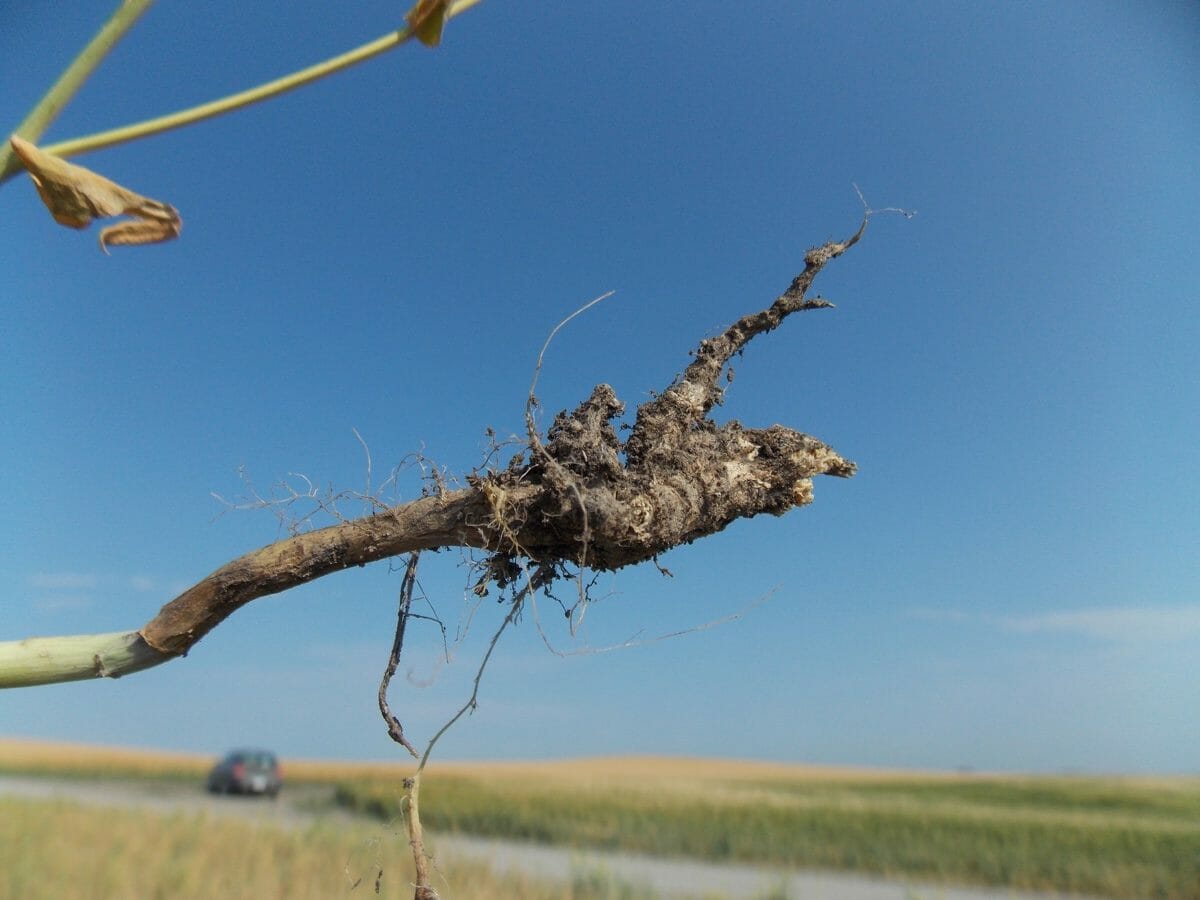Chase profits, or avoid disaster?

In 2003, a fungus that produces a disorder known as clubroot was discovered in Alberta. Clubroot has been around for centuries, especially in Europe; it is a swiftly-spreading fungus that causes large swells on the plants roots, and it’s most common among the brassica family of plants, which includes cabbage, broccoli, cauliflower, Brussels sprouts, kale, and canola. Clubroot, as a disease, sucks all the water and nutrients from the plant’s normal operations and redirects it to those big protuberances, which means the plant has fewer resources to grow strong and produce seeds.
Today, the clubroot fungus is widespread throughout Alberta’s and Manitoba’s canola fields. This is potentially disastrous for two main reasons. First, clubroot fungus produces hundreds of millions of spores, which can spread very quickly. It’s estimated that yield loss is roughly half of the percentage of infected plants. In other words, if a farmer has an infection rate of 50 percent, that farmer will lose roughly 25 percent in yield. That’s a massive problem.
Even worse, clubroot is incredibly adaptable and hard to eradicate. Changing the pH of the soil with lime can have some beneficial effects, but actual eradication is expensive and uncertain. Fungicide-resistant varieties of canola produced by big-Ag companies like Monsanto tend to be effective only briefly as the fungus quickly develops resistance.
According to scientists, the best strategy is unfortunately not ideal – or even tenable – for many current canola farmers. Developing a crop rotation where canola is only planted every third or fourth year can effectively quarantine the fungus, preventing it from spreading. But that means farmers have to switch from the very lucrative canola crop to something like wheat or barley, which brings in far less money. And even worse, the fungus problem has driven up canola prices, so a farmer may be inclined to take a short-term view, plant a ton of canola, and sell whatever survives at a large profit – while allowing the fungus to spread.
Reuters has a story about the work being done to cross-breed resistant varieties of canola by DowDuPont, Bayer CropScience, and Monsanto. The general procedure is to crossbreed canola, which does not have any native varieties that are resistant to the clubroot fungus, with other brassicas like turnips or cabbage, some of which do have that resistance. But these solutions are unlikely to debut in the next few years, leaving Canadian farmers with a lousy choice: risk infection for profit, or lose money for caution’s sake?